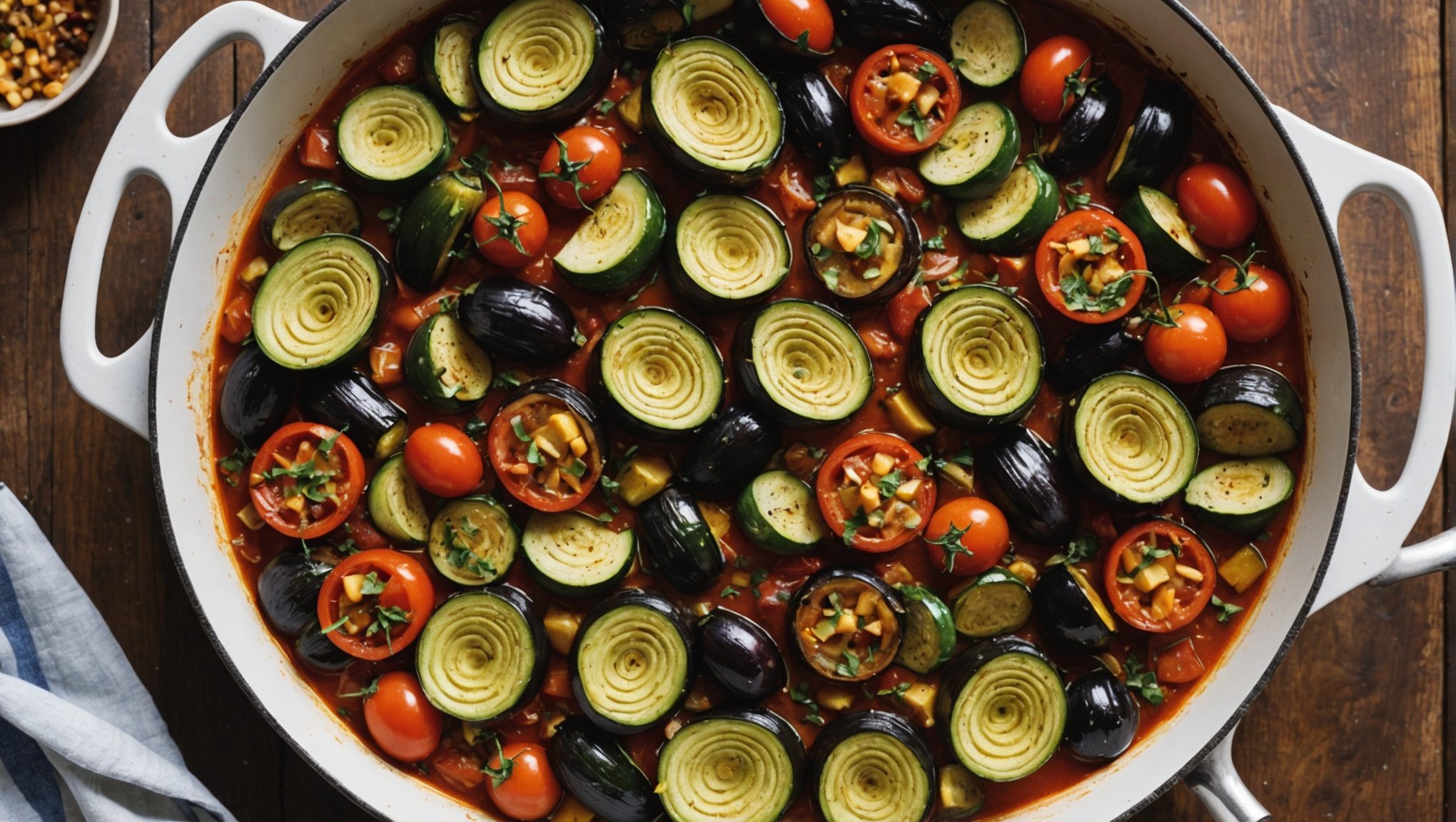Mastering the Art of Flavorful Provençal Ratatouille: A Step-by-Step Guide with Eggplant and Zucchini
Ratatouille, a classic dish from the sun-kissed region of Provence in France, is a testament to the simplicity and elegance of French cuisine. This vegetable stew, loaded with the vibrant flavors of eggplant, zucchini, bell peppers, and tomatoes, is a staple that has been delighting palates for generations. In this article, we will delve into the world of ratatouille, providing you with a comprehensive step-by-step guide to mastering this iconic dish.
Understanding the Origins and Significance of Ratatouille
Ratatouille is more than just a recipe; it is a reflection of the rich culinary heritage of Provence. The name “ratatouille” is derived from the French words “touiller,” meaning to stir, and “rata,” a slang term for a chunky stew. This dish has its roots in the peasant cuisine of the 18th century, where it was made with whatever vegetables were available and in season.
Also to read : Mastering the Art of Luxurious Eggplant Parmesan with Fresh Mozzarella: A Step-by-Step Guide
“Ratatouille is one of those dishes that is greater than the sum of its parts,” says Julia Child, the legendary French-American chef who popularized French cooking in the United States. “It’s a celebration of the fresh, the local, and the simple.”
Preparing the Ingredients: The Heart of Ratatouille
Before you begin cooking, it’s essential to prepare your ingredients meticulously. Here’s a detailed list of what you’ll need:
Additional reading : Master the Art of Crafting a Luxurious French Onion Tart with Gruyère Cheese Delights!
- Eggplant: 2 medium-sized eggplants, sliced into 1/2-inch thick rounds
- Zucchini: 2 medium-sized zucchinis, sliced into 1/2-inch thick rounds
- Bell Peppers: 2 bell peppers (any color), sliced into 1-inch pieces
- Tomatoes: 3 large tomatoes, diced, or 1 can of diced tomatoes
- Onions: 1 large onion, chopped
- Garlic: 4-5 cloves, minced
- Olive Oil: Extra virgin olive oil for cooking
- Herbs: Fresh herbs like thyme, rosemary, and basil
- Salt and Pepper: To taste
- Tomato Paste: Optional, for added depth of flavor
Step-by-Step Cooking Guide
Cooking ratatouille is a process that requires patience and attention to detail. Here’s how you can bring this dish to life:
Preparing the Vegetables
Begin by salting the eggplant and zucchini slices to draw out excess moisture. Let them sit for about 30 minutes, then pat them dry with paper towels.
Cooking the Vegetables
Heat a large pot over medium heat and add a generous amount of olive oil. Start by cooking the onions until they are translucent, then add the garlic and cook for another minute.
- Add the eggplant slices and cook until they start to soften, about 5 minutes.
- Add the zucchini slices and cook for another 5 minutes, stirring occasionally.
- Add the bell peppers and cook until all the vegetables are tender, about 10-15 minutes.
Adding Tomatoes and Herbs
Once the vegetables are cooked, add the diced tomatoes, tomato paste (if using), and fresh herbs. Season with salt and pepper to taste.
- Stir well to combine all the ingredients.
- Reduce heat to low and let the ratatouille simmer for at least 30 minutes, allowing the flavors to meld together.
Tips for Perfecting Your Ratatouille
Here are some practical tips to ensure your ratatouille turns out as flavorful and vibrant as possible:
- Use Fresh Ingredients: Fresh vegetables make a significant difference in the flavor and texture of the dish.
- Cook Slowly: Ratatouille is best cooked slowly over low heat to allow the flavors to develop fully.
- Season Generously: Don’t be shy with the salt, pepper, and herbs. Seasoning is key to bringing out the natural flavors of the vegetables.
- Use Quality Olive Oil: Extra virgin olive oil adds a rich, fruity flavor to the dish.
Variations and Modern Twists
While traditional ratatouille is a masterpiece on its own, there are several variations and modern twists you can try to keep the dish exciting:
Instant Pot Ratatouille
For a quicker version, you can use an Instant Pot. Simply sauté the onions and garlic, then add all the vegetables and cook on high pressure for 10-15 minutes.
Steamed Cod with Basil Ratatouille
Pair your ratatouille with steamed cod fish, as seen in the recipe from Perfectly Provence. The mild flavor of the cod complements the vibrant flavors of the ratatouille perfectly.
Table: Comparison of Traditional and Instant Pot Ratatouille
| Feature | Traditional Ratatouille | Instant Pot Ratatouille |
|---|---|---|
| Cooking Time | 45-60 minutes | 20-30 minutes |
| Cooking Method | Stovetop | Pressure Cooking |
| Flavor Development | Rich, slow-cooked flavors | Quick, intense flavors |
| Texture | Soft, tender vegetables | Slightly firmer vegetables |
| Ease of Preparation | More labor-intensive | Less labor-intensive |
| Equipment Needed | Large pot | Instant Pot |
Quotes and Anecdotes
“Ratatouille is a dish that tells a story of the land, the people, and the culture of Provence,” says a local chef from Provence. “It’s a dish that brings people together, whether it’s a family dinner or a grand feast.”
Julia Child once shared an anecdote about her first encounter with ratatouille: “I remember the first time I tasted ratatouille; it was like a symphony of flavors on my palate. It was love at first bite.”
Mastering the art of Provençal ratatouille is not just about following a recipe; it’s about understanding the essence of French cuisine and the joy of cooking with fresh, seasonal ingredients. Whether you choose the traditional method or opt for a modern twist, ratatouille is a dish that will continue to delight your senses and bring warmth to your table.
So, the next time you’re in the kitchen, take a moment to appreciate the simplicity and elegance of this classic dish. With every stir and every simmer, you’re not just cooking a meal; you’re preserving a piece of culinary history. Bon appétit













